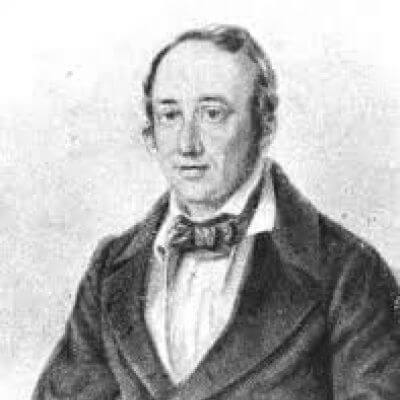Who is Smithson Tennant? Information on English chemist and discoverer of osmium and iridium Smithson Tennant biography, life story, and works.

Smithson Tennant
Smithson Tennant (1761-1815) was an English chemist and scientist who made significant contributions to the fields of chemistry and metallurgy. He was born in Lincolnshire, England, and received his education at Trinity College, Cambridge. After graduating, he worked as a tutor and a clergyman before becoming interested in science.
Tennant is best known for his work on the elements iridium and osmium, which he discovered while studying platinum ores. He also made important contributions to the understanding of the properties and behavior of other elements, including chlorine, iodine, and carbon.
In addition to his research, Tennant was a skilled experimenter and a pioneer in the use of precise measurement and quantitative analysis in chemistry. He was a member of the Royal Society and the Royal Society of Arts, and he received numerous awards and honors for his scientific contributions.
Tennant’s work had a lasting impact on the field of chemistry and helped to establish many of the basic principles that are still used today. He is remembered as one of the pioneers of modern chemistry and as an important figure in the history of science.
Contributions to Chemistry
Smithson Tennant made several significant contributions to the field of chemistry during his career. Some of his most notable contributions include:
- Discovery of iridium and osmium: Tennant is best known for his discovery of the elements iridium and osmium while studying platinum ores. These discoveries helped to establish the basic principles of chemical analysis and led to a better understanding of the properties of these elements.
- Research on other elements: Tennant also made important contributions to the understanding of the properties and behavior of other elements, including chlorine, iodine, and carbon. His work helped to establish many of the basic principles of modern chemistry.
- Development of precise measurement and quantitative analysis: Tennant was a skilled experimenter and a pioneer in the use of precise measurement and quantitative analysis in chemistry. His work helped to establish many of the basic principles of modern chemical analysis and paved the way for more advanced research in the field.
- Leadership and mentorship: Tennant was a member of the Royal Society and the Royal Society of Arts, and he mentored many students who went on to become prominent scientists in their own right. He played a leadership role in the scientific community and helped to advance the field of chemistry through his research and his mentorship of younger scientists.
Overall, Smithson Tennant made significant contributions to the understanding of the properties and behavior of various elements, and his work had a lasting impact on the field of chemistry.
Bio 2
Smithson Tennant; (1761-1815), English chemist and discoverer of osmium and iridium. Born near Wensleydale, Yorkshire, on Nov. 30, 1761, Tennant received his early education at home. He showed a particular interest in science, and in 1781 he became a student of Joseph Black in Edinburgh. The next year he studied chemistry and botany at Cambridge. Although he took two degrees in medicine at Cambridge (1788 and 1796), he never practiced. By then much of his time was spent in managing his rural estates in Lincolnshire and Chester. He also traveled extensively in Europe and spent long periods in London.
In an early paper (1791), Tennant provided the analytic proof for the composition of carbondioxide. In 1797 he showed that diamond is composed entirely of carbon. In 1804 he and his assistant, W. H. Wollaston, isolated osmium and iridium from platinum minerals. Tennant was appointed professor of chemistry at Cambridge in 1813. He was killed in a riding accident near Boulogne, France, on Feb. 22, 1815.